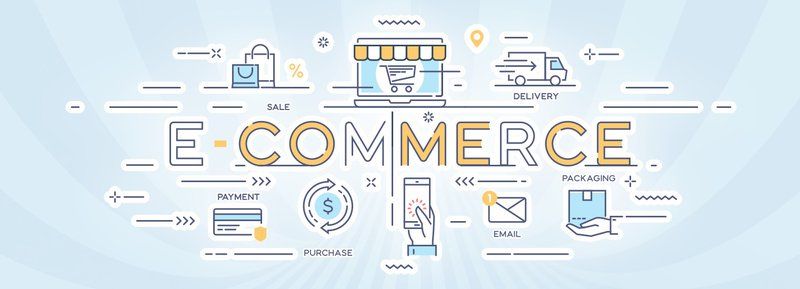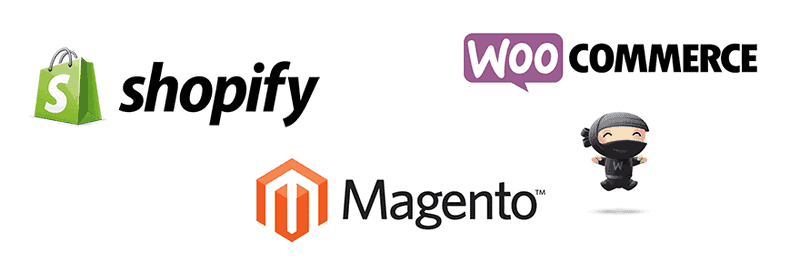How to Move your Shop Online Quickly using an eCommerce Platform
So if the current crisis has taught us anything, it's that it pays to be prepared. For business owners, you need to not have all your eggs in one basket. As retailers, you need to ensure that you are open to multiple sales avenues. You cannot just rely on the old brick and mortar anymore. That's why we have created this quick guide to help you move your shop online quickly.
It's clear that the economy is on the mend. Shoppers are spending and although most physical stores have reopened, consumers will continue with habits learned during the lockdown. That means that there will be more online shopping than there was pre-COVID.
If this is something that you haven't considered yet or if you were waiting to see the economic upturn, now is the time to act. Your loyal customers want to see that you are looking after their safety and promoting some sort of internet-based medium for them to buy your goods.
To summarise: this article aims to give you some strategic and technical advice on how to transfer your business from a physical shop only to an omnichannel retail store by building an eCommerce site. We’ll share with you the apps and providers out there who can streamline this process as well as give you tips on strategy.
So what does it mean to have an online store?

Let me start by saying that this is NOT just about having a website. In our view having a website is critical but it's not the only avenue to get sales online. In fact, you can be online without even having an eCommerce website.
Having an online store means that there is a convenient way for your customers to purchase your products via the Internet, either through a web browser or mobile app. This means that mass to be a viable way for visitors to view your catalogue, find exactly what they need and as said items to a cart.
It should also be noted that the eCommerce cycle covers purchase and fulfilment. That means your company has to integrate a payment mechanism, which at a minimum covers credit card payments. You also have to offer shipping, which means you'll need a solution to store goods, manage your inventory and handle shipping. All this needs to be automated and trackable.
As you can see, doing it properly is a major feat with multiple steps involved. However, don't be disheartened because as you'll see from the below there are many out of the box solutions to get you started.
Why do you need to move your shop online?
COVID-19 had an immediate impact on retail businesses without an eCommerce presence, forcing many to shut down. Those brick and mortar stores allowed to stay open also saw a dramatic drop in foot traffic. To prosper throughout this crisis, you will have needed to be online in one way or another.
It may be too early to make such a bold statement but this won't be the last time we are put in such a situation. Whether the Coronavirus spikes or something similar hits in the future, we will all need to learn from these events. For shop owners that means being online.
However, it's not just about where the purchase takes place. It's also about marketing and your overall brand presence.
Omnichannel marketing is a vital business strategy long term. Successful retail owners had been employing such strategies for years prior and as such the growth of eCommerce has been steadily on the rise pre-pandemic. The business was already moving online because customers were looking to buy online.
What is an eCommerce store?

For the sake of the rest of the article, when we say move your store online, we will be talking about setting up an eCommerce site. This means selling your goods on your own custom-built website so critical commerce can continue when consumers are at home and face to face just isn't viable.
Your business should have consistent branding between your physical store, any ads, emails and of course the website design. Visiting your online marketplace should feel familiar.
As potential clients come to your online store and browse the products in your virtual market, there needs to be logically and easy to use navigation. This is exactly like your physical store's setup and product placement. There will be sections for particular product categories and hopefully an easy way to streamline the search process.
From there they add their chosen items to their “shopping cart” and then they go to your chosen payment gateway. There are many payment gateway options to choose from, which can all integrate with a decent eCommerce website. These include:
Once your clients have finished shopping and an order has been made you will be notified. Then it’s time to do fulfilment of the order, ensuring your customer gets what they paid for in your online store.
Steps to Building an eCommerce Site to Move your Shop Online Quickly
1. Get a Domain
If you don’t currently have a website, let alone an online store, then you’ll need to register a domain name. If you are not au fair with what a domain is, it's your web address. This is what your users will type in to find and connect to your site.
There are a number of providers out there, which you can use to register a domain. We recommend Crazy Domains. However, moving domain registrars is not too hard if you decide you want to change later on.
2. Choose a platform

There are a number of platform options and eCommerce apps available to you. The three most popular eCommerce platforms are Shopify, WooCommerce and Magento. Whichever of these you choose for your online store, you’ll likely be satisfied.
Shopify – Shopify allows you to manage all aspects of your online store – product listings, payment gateway and stock inventory to manage fulfilment. It's truly out of the box solution for small businesses and startups. Because of all the pre-built options, it is a subscription service and not everything is fully customisable. However, if you are looking for as little work as possible for a reasonable price, then look no further.
WooCommerce – WooCommerce is a plugin for the popular website content management system WordPress. WooCommerce can be launched for free with extra paid additions if required. Just like WordPress, it's open-source so it's a lot more customisable but if you're doing it yourself you will need a bit of web knowledge. Having said that there are a million and one pre-built templates that can shorten the learning curve.
Magento – For me, Magento marries the best of the first two but does it at an enterprise level. If you have a big store, this is the options for you. However, I'd suggest hiring an expert (like us) to develop the website on your behalf.
The decision to choose between the three app platforms depends entirely on your needs, skill level and price point. If you need some advice on what's best, please do not hesitate to get in touch.
3. Design your eCommerce website
Okay, let’s assume you have chosen one of the platforms mentioned above to move your business online and build your eCommerce platform. You could be looking for a template or designing something from scratch. In any case here are some valuable tips to keep in mind.
- It has to responsive (meaning it will look good on computer, tablet and phone);
- Make sure you know and consider your brand identity;
- Keep the design as simple as possible;
- Make your site colourful and modern;
- Always use high-quality product photos;
- Ensure the site is easy to scan over (don't be test heavy);
- Use categories where possible;
- Keep all your socials connected.
Throughout the whole design process, make user you put yourself in your customers' shoes. Remember whatever you create is for them NOT for you. It needs to be accessible and workable without training.
4. Order Fulfilment
Once you’ve made the move online, it’s time to look at order fulfilment.
The standard process of fulfilment is storing inventory, picking and packing products, and shipping online orders to customers. You can handle all of this yourself but we suggest that you look at a service that will automate the process for you, integrate with the web platform you have chosen and provide support to you and your customers. A great example of an end to end service is Fulfilio.
Another option available to you is dropshipping. This is where you can add products to your website that you don’t physically stock and when a purchase is made, your supplier will ship the product directly to your customer.
Need help moving your shop online?
It's always our advice to concentrate on running your business and leaving niche activities like web development to the specialists.
So if you need to move your shop to an online e-commerce site so that your customers can continue shopping with you from the comfort of their own home but not sure exactly how to go about it or just don't want to go through the pain of doing it yourself, we invite you to get in touch.
As a marketing agency, we look at everything from design to user experience from the eyes of your customer. We will build the perfect flow from the specific marketing channel all the way through to purchase and then on to fulfilment.
Latest Blogs

April 15, 2024
Guide to Building Successful SaaS Products: Strategies & Best Practices
Unearth the secrets to building successful SaaS products with our comprehensive guide. We plunge into pivotal SaaS product development strategies, enlightening you on designing successful SaaS offerings and achieving SaaS product success.

March 13, 2024
Effective Use of APIs in Software Development: In-depth Guide for Entrepreneurs
If you're an entrepreneur or executive interested in harnessing the power of APIs in software development, this article is a must-read. Gaining invaluable insights into API integration in software while leveraging APIs for software optimisation are indispensable skills in this digital age.

March 11, 2024
Best AI Tools for Superior Productivity: An Information Guide for Entrepreneurs
Discover the power of AI tools for productivity in this comprehensive guide tailored for entrepreneurs and executives seeking to streamline their workflow.

